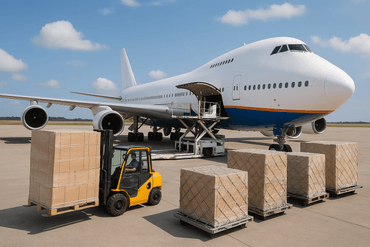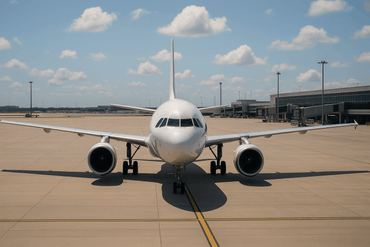
10 lesser-known shipping charges all shippers should know about



Less common shipping charges shippers should be aware of
EFAF, B/L, GA, COD, LOLO, …
The ocean freight industry is not short on acronyms and abbreviations and those familiar with it can definitely vouch for it. The countless articles that have been written about the different abbreviations in shipping is probably evidence enough, and that’s not including Incoterms.
Most articles tackle the main abbreviations involved in container shipping rates, which provides important information for both importers and exporters alike. Plus, it’s always handy to get a good understanding of important ocean freight charges like the GRI and BAF. But to be on the safe side, you’ll also want to make sure you’re at least aware of some lesser-heard of ones, especially if you handle shipments on a frequent basis.
In this post, we’ll go through 10 lesser-known shipping surcharges so you may be prepare for them and to avoid surprises in the event you get hit with one.
Wharfage
The wharfage fee is a charge levied by the carrier directly to the cargo being moved through it to compensate for usage of their space and facilities. It is usually either included in the base freight rate or part of the terminal handling charge.
Release fee
The release fee goes by many other names including cargo handover fee, delivery order fee, destination document, etc. This is a fee that covers local charges at destination and is imposed by carriers to process the release of an imported cargo to the consignee.
EIS (Equipment Imbalance Surcharge)
The EIS is a charge by carriers on outgoing cargo travelling on lanes with a trade imbalance. This refers to destinations with little to no exports and thus have little use for arriving containers. Carriers then impose the EIS to cover their costs of moving the empty containers to another hub where they can be used and get exported back out into circulation again.
VGM (Verified Gross Mass) fees
This is a relatively new charge in the shipping world. The Verified Gross Mass is the total weight of the cargo, including all dunnage and bracing, and the tare weight of the container.
From 2016, all containers to be loaded on vessels must be properly weighed and their VGMs declared and provided before they can be cleared for loading. There are administrative fees and carriers also may impose a surcharge for manual submissions of the VGM and late submissions.
Shippers can weigh their containers and/or shipments themselves. Additional weighing costs may apply should the service be required.
Manifest correction fee
The manifest correction fee is a charge levied by carriers onto shippers to update or modify information on documents such as the Bill of Lading as this would involve changing the manifest as well.
Some carriers allow one free correction or unlimited changes up till the sail date. But others apply this fee after the first set of documents has been processed, which means that in cases where your document cut-off date is before your container load date, you are bound to get hit by a correction fee. A fee may also be applied for each subsequent correction.
SEC (Security fee)
The SEC, also known as the ISPS fee, is a security fee levied by ports onto carriers which is then passed on to the client. It compensate ports for their efforts into maintaining vessel security such that it complies with the International Ship and Port Facility Security (ISPS) code. This is aimed at ensuring ship and port security and is applied per container.
HEA (Heavy lift)
HEA is a surcharge for handling cargo weighing more than a standard shipment and applied per container. This is charged by terminals or rail operators for having to utilize a heavy crane to lift and handle heavy shipments as opposed to a regular stacker equipment.
OWS (Overweight surcharge)
The OWS has a similar concept to the abovementioned HEA except it’s charged by liners for handling heavy containers with the vessel weight in mind. This is to compensate the carrier for potentially losing slots as the heavy containers will max out the vessel’s weight before slot availability.
OOG (Out of gauge)
This is an extra charge applied by carriers for handling cargo with dimensions that prevent it from fitting into standard containers and require it to be transported by special containers such as the open top container or flat rack. The charge compensates for the slot it takes up since its odd shape means no other containers can be loaded in its place.
OOG prices vary according to the number of slots the OOG container takes up, the complexity of handling it, and the going rate in that given lane.
WAR (War risk)
WAR is an extra cost applied by shipping lines onto cargo on vessels transiting through areas with high risks of war. The charge is to cover high security premiums and any extra costs for rerouting, extra security, etc. It’s usually applied to areas with ongoing wars or that are escalating towards war and even piracy-prone areas.
Area-specific surcharges
There are other area-specific surcharges that may apply depending on the canal, port, origin, and destination your cargo deals with.
Some examples include:
- PCC (Panama Canal Charge): Surcharge applied to cargo transiting through the Panama Canal
- SUE (Suez Canal Surcharge): Surcharge applied to cargo transiting through the Suez Canal
- LSC (Low Sulfur Charge): Surcharge applied for vessels operating in the EU area
- ADE (Aden Gulf Surcharge): Surcharge applied to cargo transiting through the Gulf of Aden due to higher insurance premiums from the high piracy risk in the area.
- LWS (Low Water Surcharge): Extra charge applied by the Port of Montreal because of low water levels in the St. Lawrence River.
- SMD (Security Manifest Documentation Fee): Extra charge for submitting manifest declarations to the US, Canadian, and Mexican customs office in advance. Applied to cargo loaded on a vessel at a non-US port.
There’s a whole list of such surcharges that may be applicable to your cargo. Speak to your freight forwarder to find out what extra fees you have to pay, if any.
Related Articles


